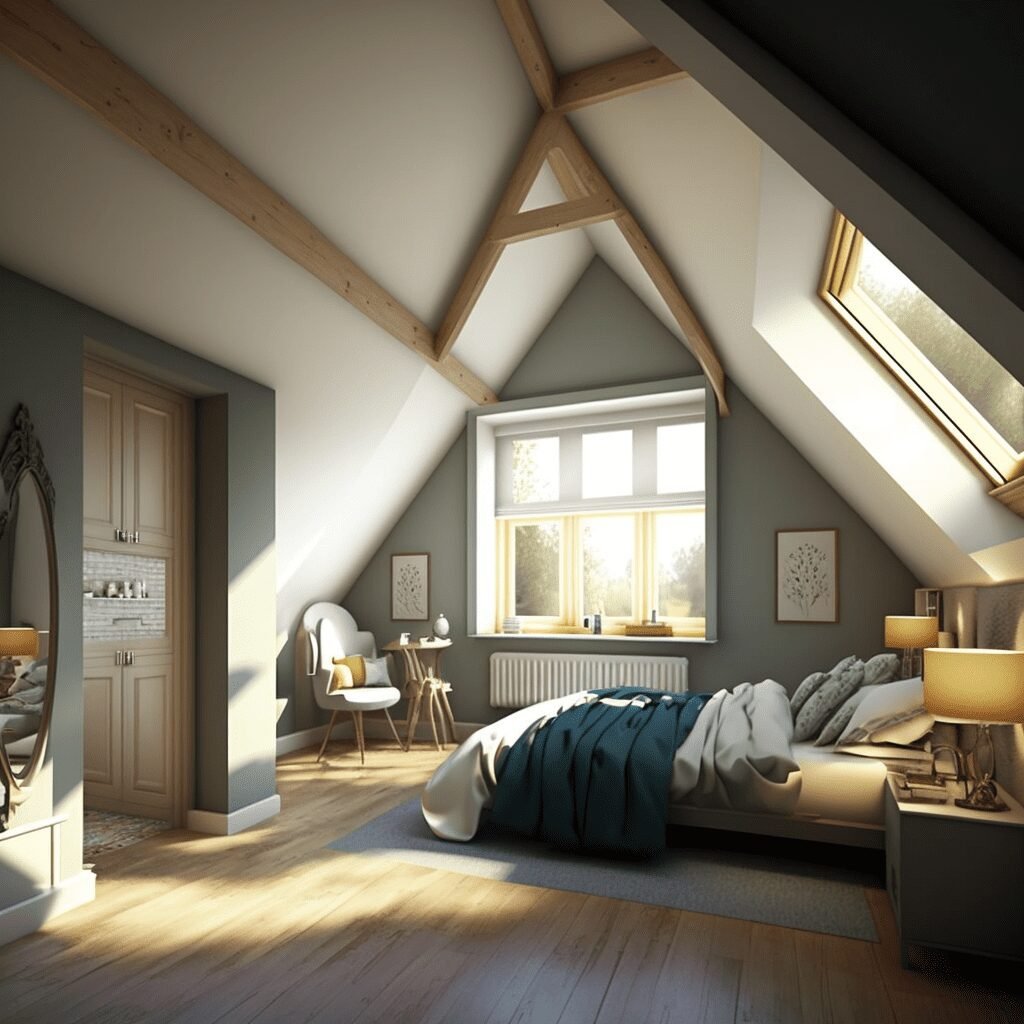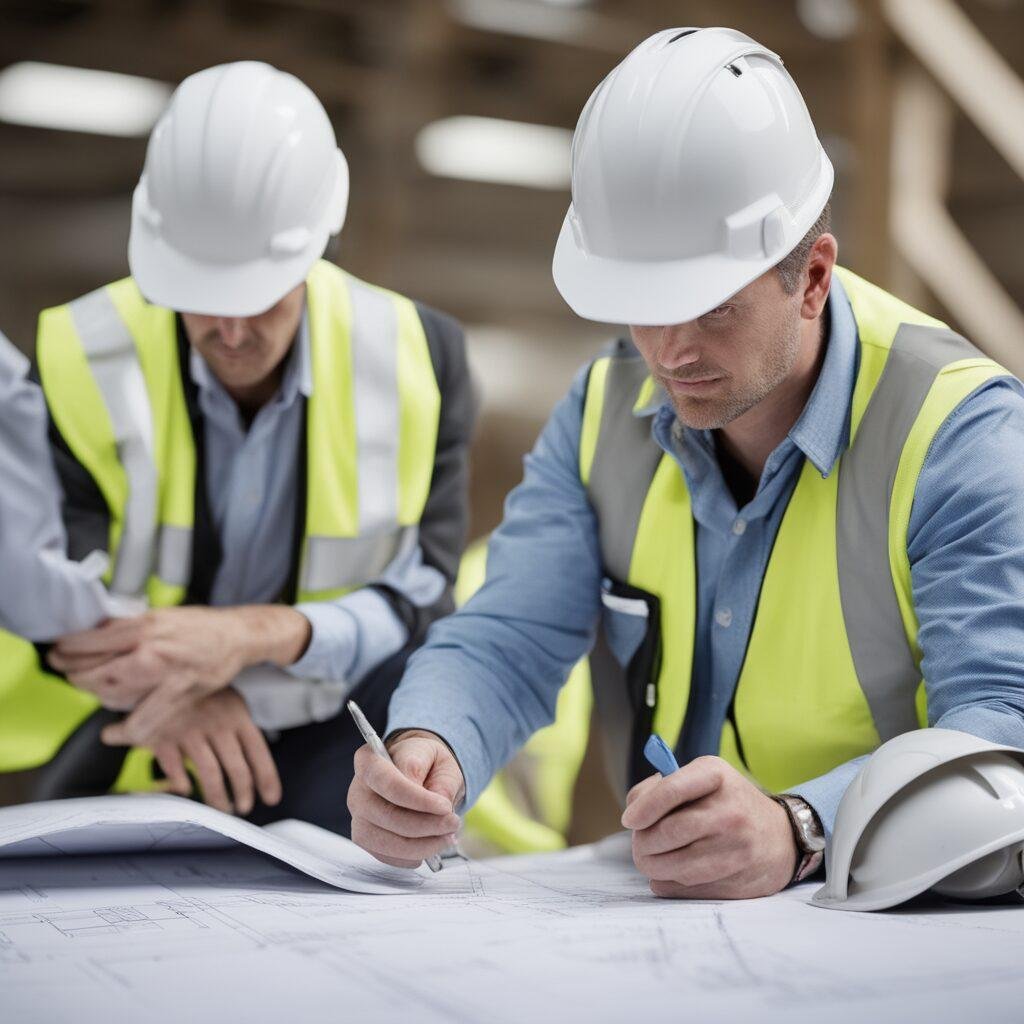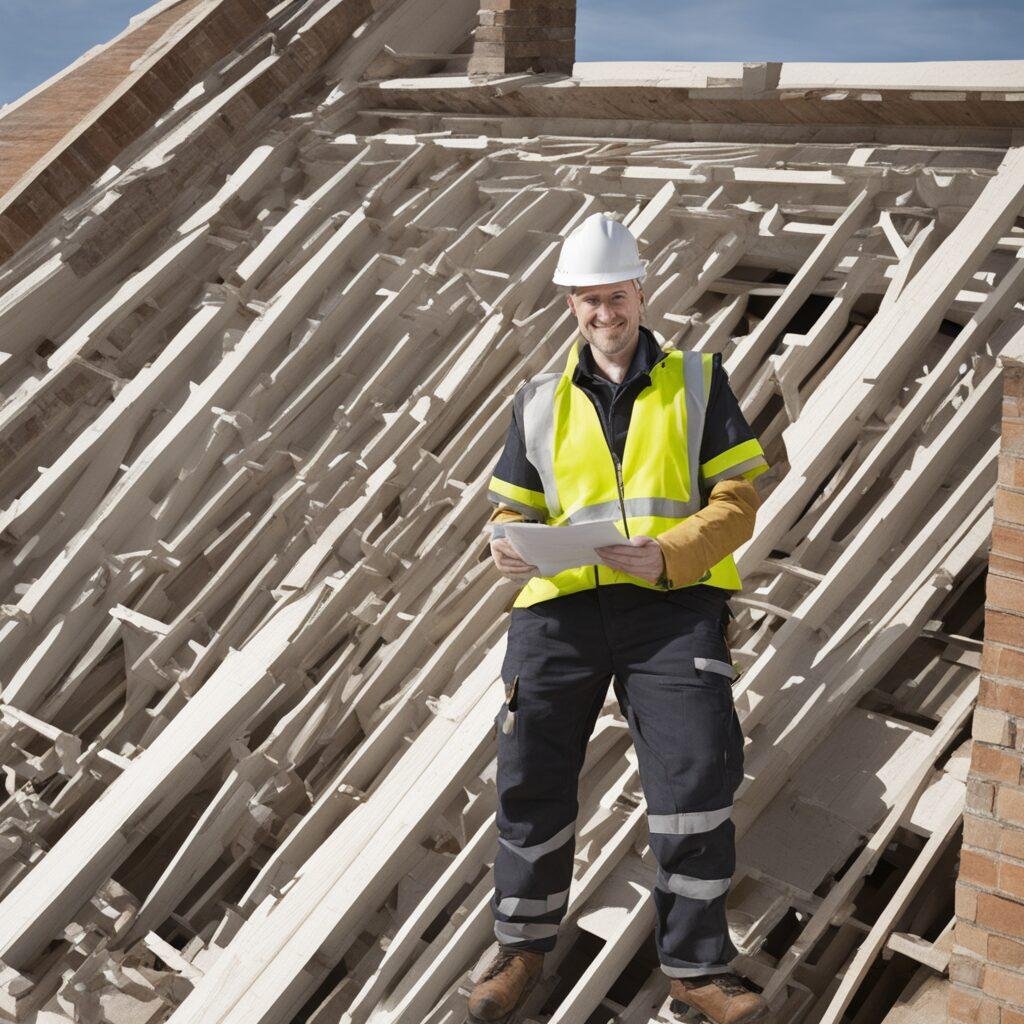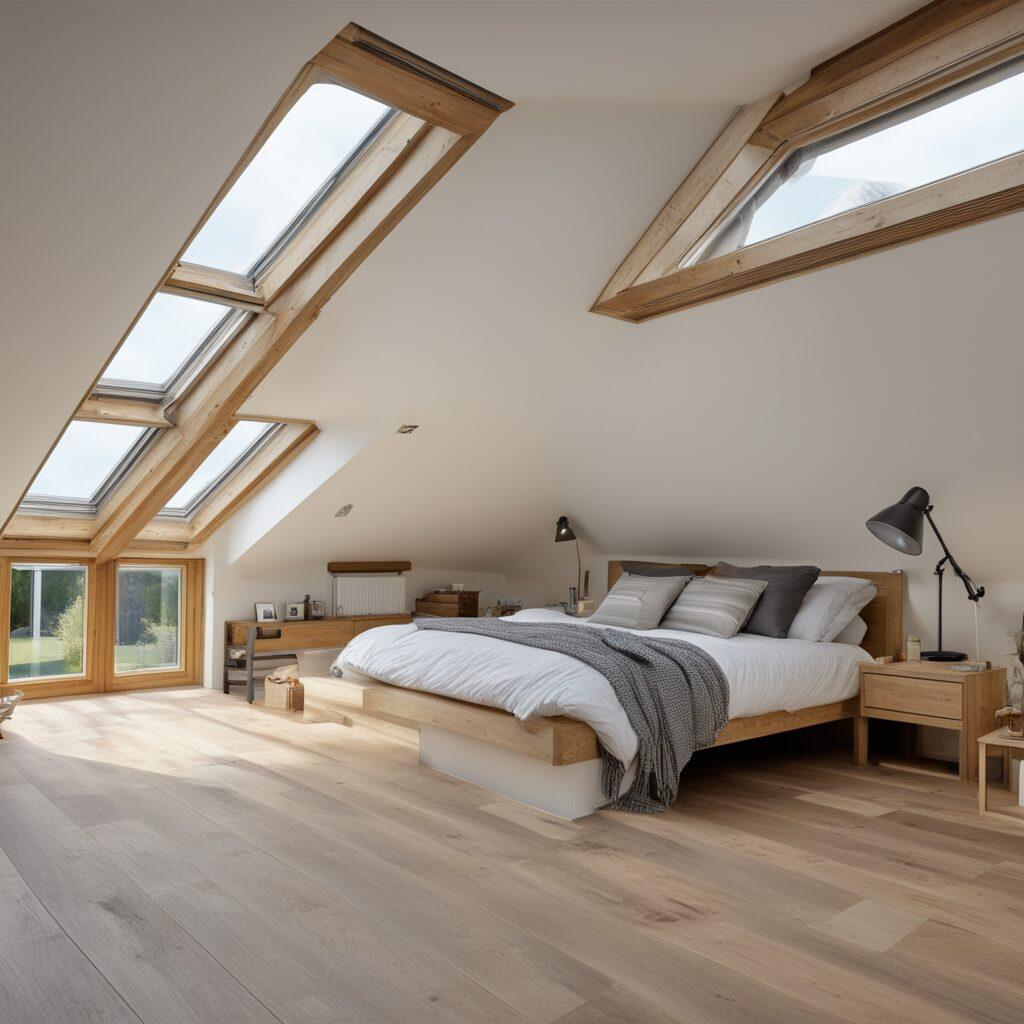Transforming your loft into a valuable part of your home is not just about adding space—it’s about enhancing your lifestyle. A loft conversion is a creative journey that turns the unused loft space above your head into a vibrant new living area. Whether you’re dreaming of a serene bedroom, a dynamic home office, or a playful children’s area, converting your loft can make those dreams come to life.
The beauty of a loft conversion lies in its versatility. From the classic dormer loft conversion that offers straightforward additional headroom, to the sophisticated mansard loft conversion that can redefine your home’s silhouette, each type of conversion brings its unique character and advantages. And while the average cost of a loft conversion may vary, the value it adds to your home is undeniable.
But before you embark on this transformative home improvement, there are several key considerations to navigate. Understanding the building regulations for a loft, whether you need planning permission, and the potential conversion costs are all critical steps in planning a successful loft conversion project. It’s not just about the aesthetics; it’s about ensuring that your new loft meets all the necessary legal and structural requirements.
In this guide, we’ll walk you through everything you need to know about loft conversions. From the initial decision to convert your loft to the final touches that make the space uniquely yours, we’ll cover the practicalities, the design inspirations, and the financial aspects—including how to use a loft conversion cost calculator to estimate your project’s budget. So, let’s begin the journey of unlocking the potential of your existing loft space and turning it into the most coveted room in your home.
Comprehensive Guide to Loft Conversion Types


When considering a loft conversion, understanding the different types of conversions available is crucial. Each type offers unique benefits and is suitable for various house styles and roof structures.
Dormer and Hip-to-Gable: Maximizing Space
Dormer Loft Conversion
A dormer loft adds vertical walls and a horizontal ceiling to create more internal space. This simple loft conversion is often considered the most cost-effective way to add a room.
Pros:
- Adds significant headroom and floor space.
- Suitable for most UK homes, including semi-detached or terraced houses.
- Often does not require planning permission.
Cons:
- The structure protrudes from the roof, affecting the external appearance.
Hip-to-Gable Loft Conversion
This type of conversion extends the sloping ‘hip’ roof at the side of your property outwards to create a vertical ‘gable’ wall. It’s ideal for adding space to a hipped roof structure.
Pros:
- Provides more lateral space in your loft.
- Enhances the external appearance with a symmetrical design.
Cons:
- More complex building work than a dormer.
- May require planning permission depending on the extent of the change.
Mansard and Velux: Aesthetic and Practical Choices
Mansard Loft Conversion
A mansard conversion involves altering the structure of the sloped roof to an almost vertical slope at the rear. This traditional loft conversion is often used in urban areas.
Pros:
- Maximizes loft space and allows for full room height.
- Blends well with older properties, maintaining the aesthetic.
Cons:
- More expensive due to the extent of building work involved.
- Almost always requires planning permission.
Velux Loft Conversion
Velux is synonymous with roof windows, and a Velux loft conversion involves installing these windows into the existing slope of the roof.
Pros:
- Less disruptive as it requires minimal changes to the roof structure.
- Often does not need building regulations approval.
Cons:
- Limited headroom compared to other types.
- Not suitable for all roof types.
Each type of loft conversion has its considerations, from the average cost to the planning permission required. The key is to choose the conversion you want those fits both your home’s structure and your personal needs.
Navigating Regulations and Permissions


Before you can transform your loft space, it’s essential to understand the building regulations and planning permissions that govern such renovations. These regulations are in place to ensure safety, structural integrity, and that the conversion is in keeping with local planning guidelines.
Understanding Building Regulations
Building regulations are a set of standards for design, construction, and alterations to virtually every building. They are developed by the UK government and approved by Parliament.
Key Areas:
- Structural integrity: Ensuring the loft conversion can support its own weight and any additional load.
- Fire safety: Adequate means of escape and fire-resistant materials must be used.
- Insulation: Proper insulation is required to prevent heat loss.
- Ventilation: Adequate ventilation is necessary to prevent condensation and ensure air quality.
Building control will inspect your conversion at various stages and upon completion to ensure compliance with these regulations.
Planning Permission Explained
Planning permission is not always required for a loft conversion, as many fall under what’s known as Permitted Development Rights. However, if your design intends to alter the roof shape significantly or exceed certain dimensions, you’ll need to apply for planning permission.
When Permission May Be Required:
- Extensions beyond the plane of the existing roof slope of the principal elevation that fronts a highway.
- Loft conversions exceeding 40 cubic meters for terraced houses, or 50 cubic meters for detached and semi-detached houses.
- If your home is in a conservation area or is a listed building.
Understanding these regulations and permissions is not just about compliance—it’s about peace of mind. Knowing your loft conversion adheres to all guidelines ensures your new space is safe, efficient, and adds lasting value to your property.
The Crucial Role of a Structural Engineer


A structural engineer is vital to the loft conversion process. They bring expertise that ensures the new loft space is not only aesthetically pleasing but also structurally sound and compliant with all building regulations.
Ensuring Structural Integrity
The primary concern of any loft conversion is the integrity of the structure. A structural engineer will:
- Assess the current state of your roof structure and loft space.
- Calculate the load-bearing capacity of existing joists and recommend reinforcements if necessary.
- Design the new loft framework, including RSJs (Rolled Steel Joists) if required.
- Ensure that any conversion involves alterations that meet building control standards.
Designing for Safety and Efficiency
Beyond the bones of the loft conversion, a structural engineer also ensures that the design is safe and efficient:
- Plan and design fire escape routes.
- Recommend the placement of windows and doors for optimal natural light and safety.
- Advise on insulation and ventilation to meet building regulations.
- Oversee the building work to ensure it adheres to the approved plans.
Hiring a specialist loft conversion structural engineer can reduce the cost in the long run by ensuring that the project is done right the first time, avoiding costly mistakes or reworks.
Estimating Loft Conversion Costs


One of the most pressing questions for homeowners considering a loft conversion is: “How much will the conversion cost?” While specific costs can vary widely, gaining an understanding of the factors that influence the overall expense is crucial for budgeting and planning your project.
Key Cost Factors in Loft Conversions
When planning for a loft conversion, it’s important to consider the following elements that can significantly influence the cost:
- Type of Loft Conversion: Whether you opt for a simple Velux conversion or a more complex mansard conversion, each type has different structural requirements and costs.
- Size and Scope: The dimensions of your loft space and the scope of the conversion will directly affect the amount of materials and labor required.
- Roof Structure Complexity: The existing design of your roof can impact the ease or difficulty of the conversion, potentially requiring more sophisticated engineering solutions.
- Material Quality and Finishes: High-quality materials and finishes can elevate the cost, but also add to the longevity and value of your conversion.
Understanding the Financial Implications
- Structural Changes: Major alterations to the roof or floor structure to accommodate the new space often involve a higher investment due to the complexity of the work.
- Permissions and Regulations: The need for planning permission or adherence to specific building regulations can introduce additional costs for applications and professional services.
- Access and Safety: Ensuring safe access for construction teams, especially in challenging urban environments, can also influence the overall budget.
- Finish Level: The difference between a basic, functional conversion and a fully bespoke, luxury finish can be substantial, reflecting your personal choice and desired outcome.
While we don’t offer a loft conversion cost calculator, these guidelines should help you form a preliminary understanding of the potential costs involved. For a detailed and accurate quote, we recommend consulting with a structural engineer or a loft conversion specialist who can provide a tailored estimate based on your property’s specific characteristics and your personal requirements.
Remember, a well-planned loft conversion is not just an expense; it’s an investment in your home’s future, enhancing both its functionality and resale value.
Project Timeline: From Planning to Completion


A loft conversion is a significant undertaking that requires careful planning and execution. Knowing the typical timeline can help manage expectations and plan for the various stages of the project.
Key Phases of Loft Conversion Projects
Here’s a general breakdown of the loft conversion process:
- Conceptualization: Envisioning the space and its use.
- Design: Working with a structural engineer or architect to create the plans.
- Permissions: Applying for and receiving planning permission if required.
- Preparation: Sourcing materials and scheduling the workforce.
- Construction: The physical building work, which can vary in length depending on the type of conversion.
- Inspection: Building control will inspect your conversion at various stages to ensure compliance.
- Finishing: Internal works, such as insulation, plastering, and decorating.
- Final Inspection: A last check to ensure everything is up to standard.
Overcoming Common Timing Challenges
Several factors can affect the timeline:
- Weather conditions: Poor weather can delay work, especially if the roof structure is exposed.
- Unforeseen structural issues: Discoveries during construction may require additional work.
- Supply chain delays: Availability of materials can impact the schedule.
- Regulatory approvals: Waiting for inspections and permissions can introduce pauses in the workflow.
By understanding these phases and potential delays, you can better prepare for the duration of your loft conversion project. Effective communication with your contractor and engineer will also help keep your project on track.
Selecting a Structural Engineer for Your Loft Extension


Choosing the right structural engineer is a pivotal decision in your loft conversion project. Their expertise will ensure that your loft extension is not only aesthetically pleasing but also structurally sound and compliant with all regulations.
Qualifications and Experience
When selecting a structural engineer, consider the following:
- Credentials: Look for engineers with relevant qualifications and membership in professional bodies such as the Institution of Structural Engineers.
- Portfolio: Review their previous work to assess their experience with loft conversions similar to the conversion you want.
- References: Ask for and follow up with references to gauge client satisfaction.
The Value of Expert Guidance
An experienced structural engineer brings immense value to your loft conversion:
- Problem-solving: They can foresee potential issues and provide solutions that save time and money.
- Quality assurance: Their oversight helps maintain high standards throughout the conversion process.
- Regulatory navigation: They can streamline the process of obtaining building control approval and ensure that your loft conversion meets all building regulations.
Investing in the right professional support can make the difference between a good loft conversion and a great one. With the right engineer, you can convert your loft into a space that enhances your home and your life.
Overcoming Common Challenges in Loft Conversions


Every loft conversion project is unique, but many face similar challenges. Being prepared for these potential issues can help ensure your loft conversion is completed smoothly.
Structural Challenges
- Insufficient headroom: This may require altering the roof structure or opting for a dormer loft conversion.
- Weak existing joists: Structural engineers can design solutions to reinforce or replace joists to support the new loft space.
- Chimneys and other obstructions: These may need to be removed or worked around, which can affect the conversion costs and design.
Regulatory Challenges
- Meeting building regulations: Ensuring that all aspects of the loft conversion comply with current building regulations.
- Obtaining planning permission: If your conversion falls outside of Permitted Development Rights, navigating the planning permission process is essential.
Practical Challenges
- Access for construction: Especially in terraced houses, ensuring that workers and materials can access the site.
- Living at home during construction: Managing the disruption and dust associated with the building work.
Solutions and Precautions
- Early planning: Engage with a structural engineer and architect early to identify potential issues.
- Clear communication: Regularly discuss progress and challenges with your contractor and engineer.
- Contingency budget: Set aside additional funds to manage unforeseen expenses.
By anticipating these challenges and planning for them, you can navigate the loft conversion process with confidence, ensuring your project stays on track and within budget.
Loft Conversion Design Ideas


Transforming your loft into a functional and stylish space requires a blend of creativity and practicality. Here are some design ideas to inspire your loft conversion.
Innovative Design for Comfort and Style
- Multi-functional furniture: Opt for pieces that serve dual purposes, such as a bed with storage drawers or a fold-down desk.
- Built-in elements: Custom shelves and seating that follow the contours of the space can save room and look sleek.
- Bold accents: Use bold colors or wallpaper on feature walls to add depth and interest to the room.
Utilizing Light and Space Effectively
- Skylights and windows: Maximize natural light with strategically placed windows, including Velux or dormer styles.
- Mirrors: Use mirrors to reflect light and give the illusion of more space.
- Clever layouts: Position key pieces of furniture to divide the space effectively, creating distinct areas for different uses.
Realizing Your Loft's Potential


A loft conversion is more than just an addition to your home; it’s an opportunity to enhance your lifestyle and increase your property’s value. Whether you envision a cozy bedroom retreat, a dynamic home office, or a playful children’s playroom, your loft can be tailored to meet your needs.
Remember, the key to a successful conversion is a blend of thorough planning, expert guidance, and a touch of creativity. With these elements in place, you can realize the full potential of your loft space and enjoy the benefits it brings to your home and life.
FAQs
The investment for transforming your loft into a livable space typically ranges from £55,000 to £80,000. This estimate can fluctuate based on factors such as the complexity of the design, the type of conversion, and the finishes you choose. It’s best to consult with a structural engineer or a loft conversion specialist to get a tailored quote for your specific project.
The 4-year rule refers to a period within which local authorities can enforce action against unauthorized developments. If a loft conversion has been completed without the necessary permissions and remains unchallenged by the local council for four years, it may be possible to apply for a certificate of lawfulness, effectively granting retrospective permission for the work.
While many loft conversions fall under Permitted Development and don’t require planning permission, there are exceptions. If your conversion plans involve significant alterations to the roof or exceed certain size thresholds, you may need to apply for permission. Always check with your local planning authority or a professional to ensure compliance.
The most budget-friendly loft conversion is typically a roof light conversion, which involves adding skylights to your existing roof structure. This option minimizes structural changes and can significantly brighten up your attic space, making it a cost-effective solution for those looking to enhance their home without extensive alterations.
Engaging a structural engineer is generally advisable for a loft conversion. They will evaluate the integrity of your existing structure, advise on necessary reinforcements, and ensure that the conversion is safe and complies with building regulations. Their expertise is crucial for both the planning and execution stages of your project.
The cost of hiring a structural engineer can vary depending on the scope of the project. Here’s a breakdown of typical fees:
- Building regulations application: £350 – £850
- Planning permission application: £200 – £450
- Survey for a small flat: £200 – £500
- Survey for a large house: £2,000 – £3,000
- Simple extension plans: £400 – £800
- Complex extension plans: £2,000 – £3,000
These are indicative costs, and it’s wise to obtain quotes from several engineers to find the best match for your needs and budget.
The 10-year rule allows property owners to apply for a Certificate of Lawfulness for an existing use or development if it has been in continuous use for over a decade without the necessary planning permission and the construction was completed at least 4 years prior. This can be a significant consideration for those looking to regularize a loft conversion retrospectively.
Hiring an architect can be incredibly beneficial for a loft conversion. They provide expert design plans, navigate planning permissions and building regulations, and offer creative solutions to maximize your space. An architect’s guidance can be invaluable in ensuring that your loft conversion is both functional and aesthetically pleasing.
Contact SECalcs Today
Ready to start your loft conversion journey? Contact us today for a free consultation. Our team of experienced structural engineers is ready to help you transform your loft into a space you’ll love. Whether you’re at the start of your loft journey or you’re ready to begin construction, we’re here to help every step of the way.
- Sunday: Closed
- Monday - Thursday: 9AM - 7PM
- Friday: 9AM - 5PM
Remember, a loft conversion is not just about adding extra space. It’s about enhancing your lifestyle, increasing the value of your home, and making the most of what you already have. With our exceptional structural engineering services, you can achieve all this and more.
Why Choose Our Structural Engineering Services for Your Loft Conversion?
A loft project is a significant undertaking that requires careful planning and expert knowledge. By choosing our structural engineering services, you can ensure your loft is safe, compliant with all necessary regulations, and beautifully designed to meet your needs. So why wait? Start your loft conversion journey with us today.





- Head Office: Corwell Lane, Uxbridge, England, UB8 3DE.
- + (44) 07359267907
- info@structuralengineercalcs.com


